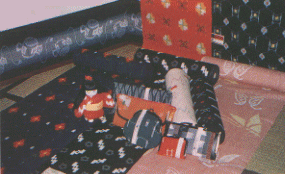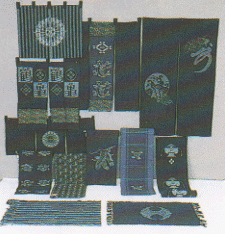During the early Meiji period these products were sold in all Japan and thus spread the
fame of "Bingo Kasuri" throughout the country.
Moreover, with two other forms of Kasuri, the Iyo-Kasuri and Kurume-Kasuri, the Bingo-Kasuri
constitutes what has become known as the three most "great" nationwide acknowledged Kasuri
forms.
Demand has been decreasing with modern conceptual changes pertaining clothing and a switch
toward synthetic materials, but through development of new articles the industry is going to
enter the apparel market.
In 1994 it has been designated a traditional craft of Hiroshima Prefecture.
|
 |

